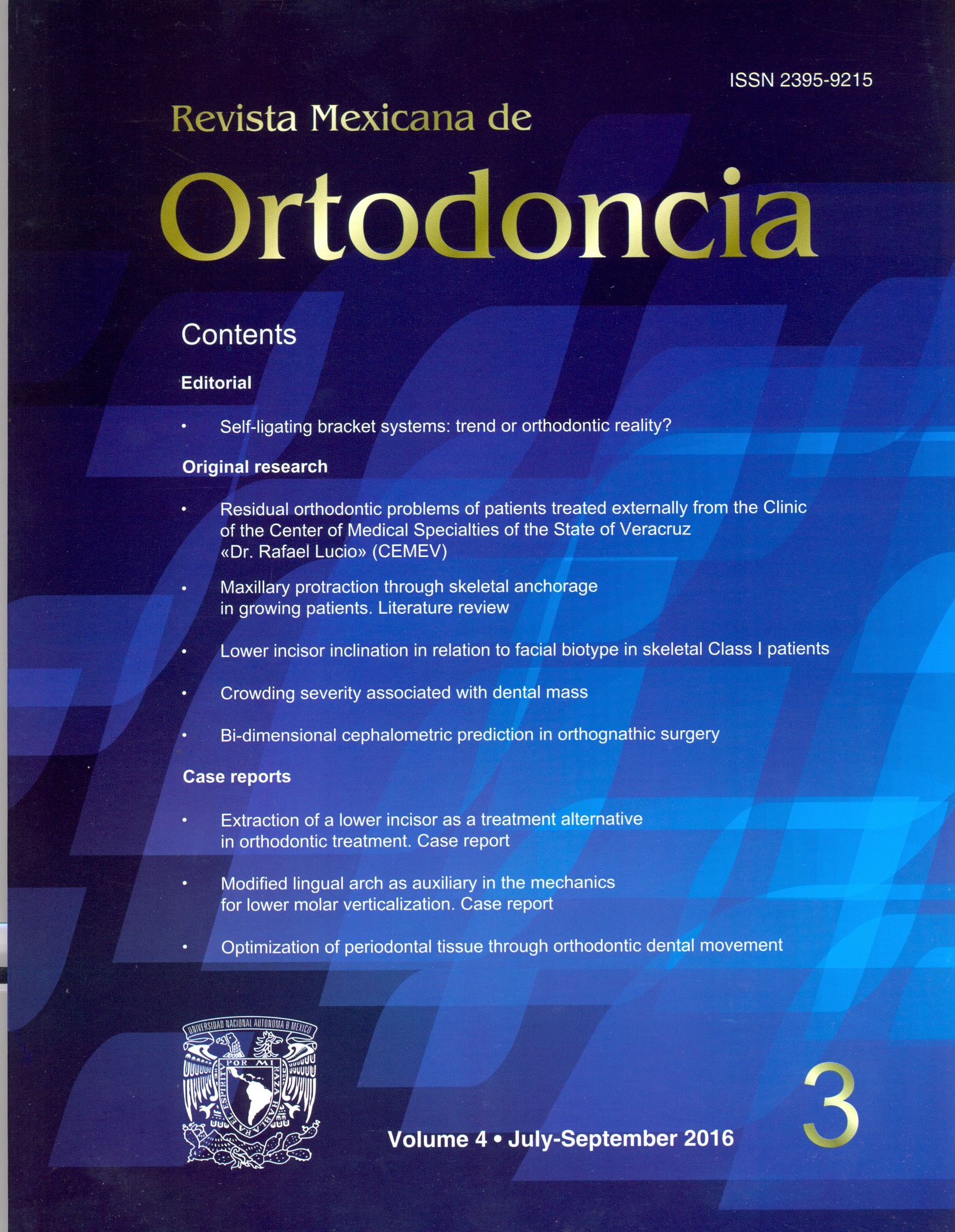Modified lingual arch as auxiliary in the mechanics for lower molar verticalization. Case report
Contenido principal del artículo
Resumen
Molars commonly have mesial angulation positions as result
of the loss or absence of the adjacent tooth and of permanent molar impaction. This molar inclination is related to bone defects, periodontal pockets and extrusion of antagonist molars. Objective: To upright a lower molar with modified fixed appliances. Case report: Female patient 22 years of age; skeletal class II, class II division I malocclusion, convex profile; absence of four first premolars, mild crowding, second lower right molar (OD 47) with an important buccal-mesial inclination. Treatment: A modified lingual arch with distal arm extension was performed with a distal extension arm from which elastomeric chains were attached to a lingual button on the lower molar. Results: For 8 months the elastic chain was activated until the position of the 47 allowed placement of the appliances to continue with the leveling phase through orthodontic
mechanics.
